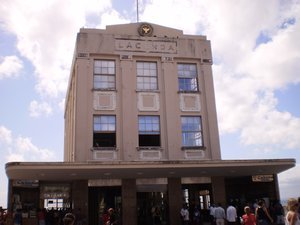Advertisement
Published: September 16th 2009

 Elevator Lacerda
Elevator Lacerda
This and the next four pics.
It connects the upper city to the lower city. I haven't taken it yet, but I believe it costs 5 cents.Pelourinho-or Pelor for short, is the historic center of Salvador. The word Pelourinho derives from a word meaning "whipping post". Salvador is currently the cultural center of Brazil because it is the oldest city in with deep connections to its colonial past and it was the first capital of Brazil from the 16-18th century. Slaves used to be brought here to work on the sugar plantations, but later, coffee and mining in the southeast became more important and the capital moved to Rio de Janeiro, and later to Brasilia. Salvador has been in the decline ever since. The population is around 3 million, making Salvador the 3rd biggest city in Brazil, after Rio with 10 million, and Sao Paulo with 19 million. According to wiki, 80% of the population here has African ancestry. We had a walking tour to learn about the history and see some of the museums and galleries in Pelourinho. There are 300 Catholic churches here, and 285 Candomble temples (which I recently learned that it is the religion associated with Voodoo). One of the churches in Pelourinho is built by slaves for slaves, and it took 100 years until it was completed because they only had time

 P9160024
P9160024
I think there are two shafts.
One closer to the base, and the one far out there was built in the 1930s.to work on it on Sundays and holidays they didn't have to work. There is also the Foundation for Gorge Amado. I haven't read his works, but they are supposed to be really good. There will some recommendations in the pictures.
Advertisement
Tot: 0.119s; Tpl: 0.016s; cc: 6; qc: 51; dbt: 0.0619s; 1; m:domysql w:travelblog (10.17.0.13); sld: 1;
; mem: 1.1mb

 Elevator Lacerda
Elevator Lacerda
 P9160024
P9160024





























Lucy
non-member comment
Wow, such rich history. I always thought there was something lacking in American history. Only 200 years. So cool that you live so close to the sea. I think I need to live in a port city. I like the ocean. Stanford is starting to feel a little landlocked. The bay is close by but not sure if it's close enough for me to bike to.